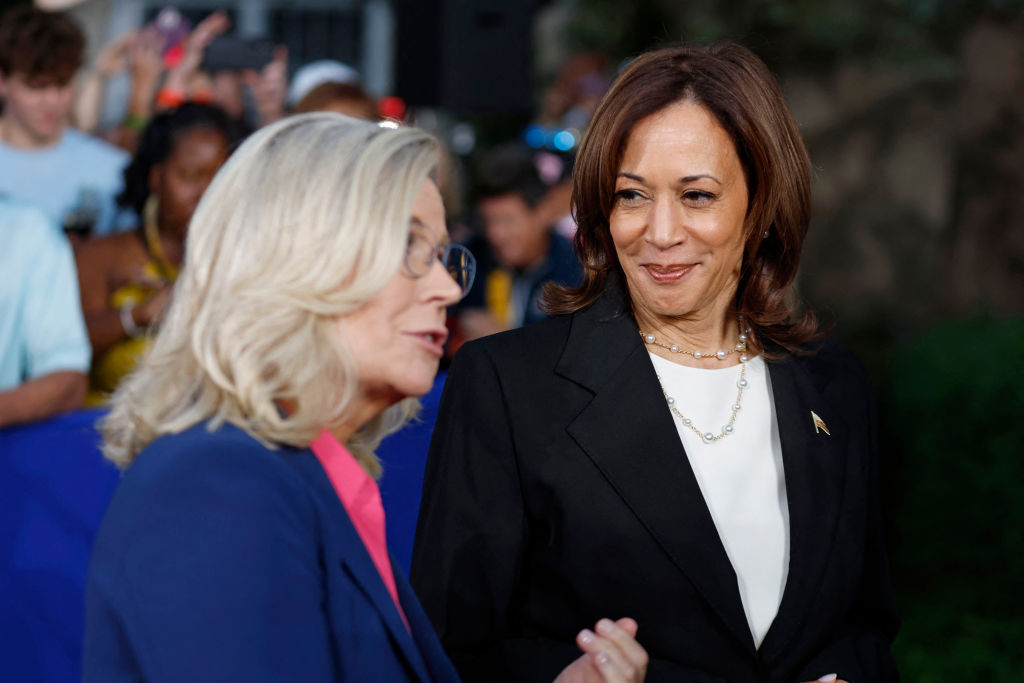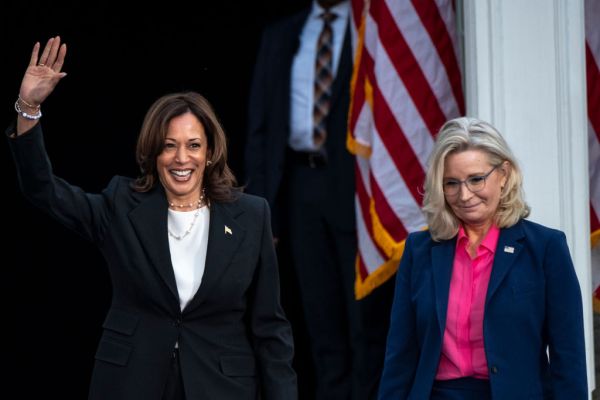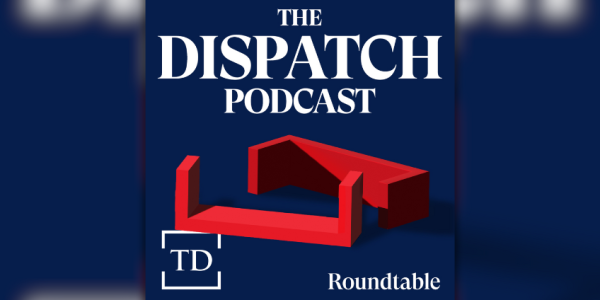
Thirty-one days to go, and we are getting down to the nitty-gritty.
As you will see in the Statshot below, Vice President Kamala Harris is ahead nationally by 2.6 points in an average of high-quality polls. That’s a little less than 1 point outside of the swing state shift, the Electoral College riptide caused by the slightly more Republican lean of our seven swing states.
Nevada, Arizona, Georgia, North Carolina, Pennsylvania, Michigan, and Wisconsin were a combined average of 1.7 points less Democratic than the nation as a whole four years ago. We have had a spate of good swing state polling mostly showing former President Donald Trump ahead, barely, in the places he has to hold and Harris, barely, doing the same within her own firewall.
But the rule still applies: Because of the much higher number of good national polls, it’s simpler and probably more instructive to just dock the Democratic nominee 2 points in national polls for the swing state shift. That would still be an Electoral College win for Harris, especially since she needs only to keep her own turf, the blue wall, and Nevada, to prevail.
Six-tenths of a point isn’t a lot of breathing room for Democrats a month out from the election. Current President Joe Biden was up by more than 7 points on average in polls 31 days out and ended up winning nationally by just 4.5 points.
At 46.6 percent this week, Trump has already basically matched his final number from 2020. If he increases his share in the final month this year as much as he did back then, Trump would finish with 50.3 percent of the national popular vote and, most likely, a clean sweep of the swing states.
Which brings us to the question we ask every week: Is Trump running better or is Trump polling better? Is it that the Trump effect is still out there over the horizon and will deliver the biggest win for Republicans since 2004, or—through a combination of a more unified Republican Party and improved polling methods—is it that we’re getting a truer picture of the race than we did in Trump’s two prior runs? I’ll let you know the answer at about 9:30 p.m. ET on November 5.
But until then, consider this: In the current polling average, we have just 4.2 percent of the electorate not allocated to either of the major party nominees. If we figure that protest and third-party votes will eat up a similar share as they did in 2020—1.9 percent—that would leave us with 2.3 percent who are currently undecided.
That’s a lot smaller than the share of those who said they were still making up their minds, according to exit polls from four years ago. Then, only 84 percent said they had made up their minds before the start of October. Surveys from the time support that, with the universe of undecided voters at this point in 2020 double what it is today.
Biden led bigly among the early deciders, but in the next 8 percent of the electorate that made their minds up in October, it was an even split. Trump got 49 percent, Biden got 48 percent. With the final 2 percent of the electorate that made up their minds in the last week of the campaign, though, it was a blowout: Trump 64 percent, Biden 31 percent.
This is proof of a couple of things: It wasn’t just that the polls were off in 2020, it was that Trump closed extraordinarily well. It was even better than in 2016 when exit polls showed a larger share of the electorate undecided until the final week—5 percent—of which Trump got 49 percent to former Secretary of State Hillary Clinton’s 41 percent.
Compare the results from the two years:
2020: Decided how to vote…
In the last week (2 percent of electorate): Biden 31–Trump 64 (Trump +33)
In October (8 percent of the electorate): Biden 48–Trump 49 (Trump +1)
In September (11 percent of the electorate): Biden 52–Trump 45 (Biden +7)
Before September (73 percent of the electorate): Biden 51–Trump 48 (Biden +3)
2016: Decided how to vote …
In the last week (5 percent of the electorate): Clinton 41–Trump 49 (Trump +8)
In October (12 percent of the electorate): Clinton 37–Trump 51 (Trump +14)
In September (12 percent of the electorate): Clinton 46–Trump 48 (Trump +3)
Before September (60 percent of the electorate): Clinton 52–Trump 45 (Clinton +7)
In 2020, Trump had a lot less ground to make up with the persuadable voters, but there were a lot fewer of them. The polling from this year suggests that trend has continued into Trump’s third cycle. Trump started better and the electorate firmed up even sooner: half as many undecided voters 31 days out and Trump very nearly at his final number from four years ago.
So rather than going into October way behind but with 10 percent of voters still up for grabs, Trump enters the home stretch nipping at Harris’ heels but with only a handful of voters undecided.
If Trump again gets nearly two-thirds of the final 2 percent of voters who decide, he might well win. If we extrapolate from the current averages based on the 2020 late deciders, we’d end up this year with Harris 49.9 percent to Trump 48.1 percent, just a 1.8-point margin and certainly within the danger of the swing state shift.
But, if Harris nabs just half of the last voters to choose, she’d sail in with an outright majority and a 2.6-point win, probably landing her clear of the shift.
So when you see Harris campaigning with former Rep. Liz Cheney or Sen. J.D. Vance sounding warm and fuzzy in the vice presidential debate, you can know exactly what they’re doing: trying to pick off every single agonized late decider they can.
Harris needs to prevent another late stampede of Trump-skeptical Republicans to Trump, and Vance is trying to cause one. We’ll see soon enough who’s better at driving the herd.
Holy croakano! We welcome your feedback, so please email us with your tips, corrections, reactions, amplifications, etc. at STIREWALTISMS@THEDISPATCH.COM. If you’d like to be considered for publication, please include your real name and hometown. If you don’t want your comments to be made public, please specify.
STATSHOT
General Election
Kamala Harris: 49.2% (↑ 1.0 points from last week)
Donald Trump: 46.6% (↓ 0.2)
[Average includes: Marist/NPR/PBS: Trump 48% – Harris 50%; Emerson: Trump 49% – Harris 50%; Echelon: Trump 44% – Harris 49%; Susquehanna: Trump 44% – Harris 49%; Quinnipiac: Trump 48% – Harris 48%]
Generic Ballot
Democrats: 48.0% (no change from last week)
Republicans: 46.2% (↑ 0.8)
[Average includes: Marist/NPR/PBS: 47% Democrats – 47% Republicans; Emerson: 47% Democrats – 46% Republicans; Echelon: 50% Democrats – 45% Republicans; NBC News: 48% Democrats – 46% Republicans; Monmouth: 48% Democrats – 47% Republicans]
TIME OUT: EXTENDIES
New York Times: “Fifty years ago, the breaded, fried chicken tender as we know it was invented in Manchester, N.H. At least, that’s what they say in Manchester. … Restaurants were cooking chicken sticks and chicken fingers before 1974. So far, though, nobody has seriously challenged Manchester’s status as first in the nation to embrace the true tender. … Like many stories about dishes that became touchstones of American cooking, the tale of the Manchester chicken tender starts with immigrants. In 1917, two men who were born in Greece and settled in Manchester, Arthur Pappas and Louis Canotas, opened a candy store downtown called Puritan. … In 1974, Arthur’s children added a large sit-down restaurant behind the shop, the Puritan Backroom. … As one of [Arthur’s kids], Charlie Pappas, built out the menu, a fry cook told him ‘he had a small piece of chicken he didn’t know what to do with.’ This was the tenderloin. … Slowly, inexorably, chicken tenders began to outsell everything else at the Puritan Backroom.”
THREAT OF GREEN PARTY SPOILER HAUNTS WISCONSIN DEMS
Politico: “Jill Stein is once again on the [Wisconsin] ballot as the Green Party nominee, reviving bitter memories of the role she played eight years ago. Wisconsin Democrats haven’t forgotten the searing experience of 2016. … Thanks to its rapid growth, Dane County — which includes Madison — has turned from a reliably Democratic stronghold into a raging turnout machine that has overwhelmed the GOP’s traditional strength elsewhere in Wisconsin. … Yet the seat of that newfound Democratic power is uniquely susceptible to Green Party influence. While they have little infrastructure in the county, within the last decade, Madison has nevertheless elected two Green candidates to local office. … This cycle, the Democratic Party is determined not to get caught sleeping by underestimating the Greens’ support like they did in 2016. The national party has built an operation across the country that takes a proactive and ruthless approach toward stopping third-party threats.”
Dems fight Georgia’s order to hand count ballots: New York Times: “Democrats sued the Georgia State Election Board on Monday, claiming that a new rule ordering counties to count ballots by hand would invite chaos on election night. … The lawsuit, filed by the Democratic National Committee and Democratic Party of Georgia with support from Vice President Kamala Harris’s campaign, argues that the state election board went far beyond its authority in passing the rule. … The rule … requires local election officials to count ballots by hand after polls close to ensure the total number of ballots matches the machine-counted totals. … Former President Donald J. Trump has praised the three majority members of the board, including calling them out by name at a rally in Atlanta this summer and referring to them as ‘pit bulls’ fighting for ‘victory.’ … Brad Raffensperger, the Republican secretary of state, has repeatedly said the board is ‘a mess’ and warned that its rules were making elections in Georgia less safe and secure.”
Battleground polls: Still a toss-up, but Harris narrows gap on key issues: Cook Political Report: “Harris has a lead within the margin of error in Arizona (+2), Michigan (+3), Nevada (+1), Pennsylvania (+1), and Wisconsin (+2). Trump is ahead 49% to 47% in Georgia, and the two candidates are tied at 49% in North Carolina. … Underneath the topline numbers, though, there have been some significant shifts, most notably Trump’s slipping advantage on his two strongest issues — inflation and immigration. In August, Trump led Harris on inflation and cost of living 48% to 42%. Today, voters are evenly divided (47%). … Since kicking off her campaign two months ago, Harris has honed in on an ‘affordability’ message that stresses reducing the costs of pharmaceutical drugs. … Trump’s attempts to link her to ‘Bidenomics’ and the role the Biden Administration’s economic policy played in driving up the cost of living have not been as effective as Republicans had hoped.”
GOP SWITCHES SPENDING STRATEGY AS DEMS SWAMP AIRWAVES
Politico: “Senate Republicans’ campaign arm is making a last-minute shift in its TV advertising strategy in the face of a growing spending disparity with Democrats in key races. … The National Republican Senatorial Committee is canceling all its remaining independent expenditure buys and redirecting that money toward ‘hybrid’ ads. … Those ads are purchased in conjunction with the candidate’s campaign and at the lower TV ad rate offered to candidates — allowing the NRSC’s money to be spent more efficiently. … But they come with a catch: Hybrid ads must spend as much time addressing a national issue or party as they do the specific Senate or House race. That can make the ads clunky and difficult to design. … The move comes as Republican candidates have faced significant gaps on the airwaves. … The NRSC is running hybrid ads exclusively in Montana, Ohio, Wisconsin, Maryland, Arizona and Pennsylvania.”
Looming Tester loss sets up Senate logjam: New York Times: “The prospect of a new Democratic president and a Republican Senate is a rare scenario. … Not since Grover Cleveland in 1884 has a Democrat been elected to a first presidential term with a Republican Senate. … With Republicans in control, Ms. Harris would have to think about her cabinet choices in an entirely different way. The idea that presidents are entitled to their chosen nominees is a quaint one these days. … Things could get even more difficult when it comes to lifetime appointments to the federal courts. … As for the Supreme Court, it is not certain that a Democratic president could even get a nominee through a Republican-controlled Senate should a vacancy occur. … Having Ms. Harris in the White House and the G.O.P. controlling the Senate could empower the dwindling band of more moderate Republicans like Senators Susan Collins of Maine and Lisa Murkowski of Alaska, who might team up with Democrats on select issues.”
Cruz tries a softer side as Allred narrows deficit: Politico: “The second-largest state in the country still leans Republican, but it’s become more diverse, more urban and suburban — demographic shifts that pose a threat to Cruz in his race against Rep. Colin Allred, a Dallas member of Congress who played linebacker at Baylor University and in the NFL. … Cruz is touting efforts to protect in-vitro fertilization, an effort to blunt Democratic attacks on abortion rights — which have proven popular even in Republican-dominated states like Texas. … And then there’s the infamous Cancun trip. Whether talking to voters on the campaign trail or in his TV ads, Allred is seeking to remind voters about Cruz’s jaunt to the Mexican beach. … There’s some evidence Allred’s approach is making inroads. The latest FiveThirtyEight polling average puts Cruz ahead by just 3.5 points, a similar margin to 2018.”
BRIEFLY
Poll: Dems lead in crucial North Carolina House battleground—Inside Elections
Is Bacon cooked? Nebraska’s 2nd District shifts to “Lean Dem”—UVA Center for Politics
Battleground Republicans moderate on abortion—Washington Post
Rep. Jim Jordan positions for leadership move if GOP loses majority—Washington Post
WITHIN EARSHOT: TURKISH DELIGHT
“I love that question! Great service, great service.”—New York City Mayor Eric Adams, recently indicted on corruption charges, responding to a question about whether he would recommend Turkish Airlines—the carrier that (allegedly) illegally comped him first-class tickets.
MAILBAG
“I recently listened to an episode of Hacks on Tap, where David Axelrod and Mike Murphy discussed their frustration with polls from media outlets. They argued that these polls are less reliable than internal polling because media outlets often have limited budgets, while campaigns can invest more resources to gather more comprehensive data. Unsurprisingly, they also mentioned the difficulty of reaching people by phone, which leads to it being very expensive to conduct a good poll—something I can relate to since my phone blocks unknown callers by default. On the other hand, I’ve heard pundits argue that internal polls can be biased, as pollsters may feel pressure to provide results that align with what campaigns want to hear. What’s your perspective on this?”—Mike Farley, Lakewood, Ohio
Mr. Farley,
If I could have all the internal polls, I’d rather have them than the public polls typically available. But how would we know we were seeing the whole picture?
The polling budget for a well-funded campaign dwarfs what even the largest media outlets are willing to lay out for research. For the 2020 campaign, the Trump team paid its two principal pollsters more than $7.3 million combined. The Biden campaign spread out $5.5 million over three pollsters. A news organization, by comparison, might spend $50,000 per national survey and conduct five or six across a two-year election cycle.
Good polls are very expensive since they require competent live operators who can call an appropriate mix of cell phones and landlines. Cheap-o robo calls can legally dial only landlines, so those are no good. But unskilled operators will skew the results with sloppy questioning. Online surveys are cheap, too. But those have big problems with participation. If you limit the universe of potential respondents to those who would feel comfortable clicking a link online and diving into a survey, you’re starting with a skewed sample. There are ways around that, but the best way to do political polling remains live interviews by skilled operators, which also happens to be the most expensive. That’s why so many media outlets partner with colleges to do the work: Students training to be the high-priced pollsters of the future make an ideal, low-cost workforce.
So while media outlets are cutting corners and trying to pick the optimum time to conduct a limited number of polls—before or after a debate, a convention, etc—the campaigns and associated super PACs are polling constantly and doing so at greater depth: more questions, bigger sample sizes, etc.
But money alone does not guarantee good polling. There are plenty of pollsters who are very expensive and very bad. They may excel at “client management,” also known as telling the people paying them what they want to hear. But those folks typically burn out. The big, expensive firms like Public Opinion Strategies for the GOP and Lake Research Partners for the Dems have endured because they mostly get it right, even when it’s not what their clients want to hear.
But here’s where it gets tricky. Over the years, I have been made privy to lots of internal polling. And with a very few exceptions, it has always been when a campaign or consultant wanted to make themselves look good. Sometimes you get a strategic leak to show that the race is closer than the conventional wisdom holds or that a lead is larger than scant public polling suggests. But what you don’t usually know, even from a reputable source, is what you’re not seeing.
There’s a journalistic duty for news outlets to publish poll results even when they seem to be outliers that go against the hopes of an outlet’s audience. When the New York Times or the Wall Street Journal drops a poll that makes partisans in their audiences upset, they’re making good on the implicit promise of accountability and transparency.
A campaign, on the other hand, might only be sharing an outlier that looks better for them or even just one part of a poll that, taken as a whole, would be damaging to their preferred spin. I always want to see polls from partisan pollsters I trust, and sometimes I am persuaded to see a race a different way. But I always proceed with caution.
All best,
c
You should email us! Write to STIREWALTISMS@THEDISPATCH.COM with your tips, kudos, criticisms, insights, rediscovered words, wonderful names, recipes, and, always, good jokes. Please include your real name—at least first and last—and hometown. Make sure to let us know in the email if you want to keep your submission private. My colleague, the tried and tested Nate Moore, and I will look for your emails and then share the most interesting ones and my responses here. Clickety clack!
CUTLINE CONTEST: THE FULL MONTY (HALL)

Primo picture, primo entrants for this week’s Cutline Contest! And for those not old enough to remember Let’s Make a Deal and its host Monty Hall, well, it’s the giant rocking horse for you this week:
“So, President Zelensky, it’s time to pick. For the grand prize of three dozen Patriot missiles: Is it door number one, door number two, or door number three?”—Kevin Cook, Fort Worth, Texas
Winner, Wretches Division:
“Behold: the vast wonder of the press corps of America!”—Jeff Tatusko, Plum, Pennsylvania
Winner, Beyhive Division:
“Vice President Kamala Harris invokes popular song by directing President Vladimir Putin ‘to the left, to the left.’”—Linda McKee, DuBois, Pennsylvania
Winner, the Great Egress Division:
“And over there … Donald Trump has opened the exit door.”—Mike Darnell, Blue Ridge, Georgia
Winner, Lemme Call You Right Back Division:
“Vladimir? … Now’s not a good time.”—Richard Basuk, New York, New York
Winner, The More You Know Division:
“As you can see on this world map, Ukraine is a little country next to Russia.”—Jim Laufenberg, Sturgeon Bay, Wisconsin
Winner, Not a Joke, Folks Division:
“And on the other hand, we have President Biden. Will someone wake up Joe? Where’s the Secret Service?”—Tom Walk, Greensboro, North Carolina
Winner, Smachnoho Division:
“President Zelensky, the borscht and ohirok are this way, I made sure we have extra sour cream”—Tim Maloney, St. Louis, Missouri
748 POUNDS OF MEXICAN BOLOGNA LATER
New York Post: “One woman suffered a great loss this week after she was busted smuggling more than 700 pounds of illegal bologna across the US-Mexico border in Texas. The 43-year-old woman, who is an American citizen, tried to enter the country at the Presidio port of entry from Mexico Monday afternoon when she only declared a cooked meal during the primary inspection, according to the Customs and Border Protection. … CBP agriculture specialists called her baloney and conducted a secondary inspection of the car, finding several suitcases stuffed with 40 rolls – 748 pounds – of Mexican bologna, a prohibited meat that poses a threat to America’s pork industry. … The meat was then confiscated and destroyed. … The vehicle was also seized and the driver was issued a $1,000 civil penalty, officials said.”
Nate Moore contributed to this report.









Please note that we at The Dispatch hold ourselves, our work, and our commenters to a higher standard than other places on the internet. We welcome comments that foster genuine debate or discussion—including comments critical of us or our work—but responses that include ad hominem attacks on fellow Dispatch members or are intended to stoke fear and anger may be moderated.
With your membership, you only have the ability to comment on The Morning Dispatch articles. Consider upgrading to join the conversation everywhere.